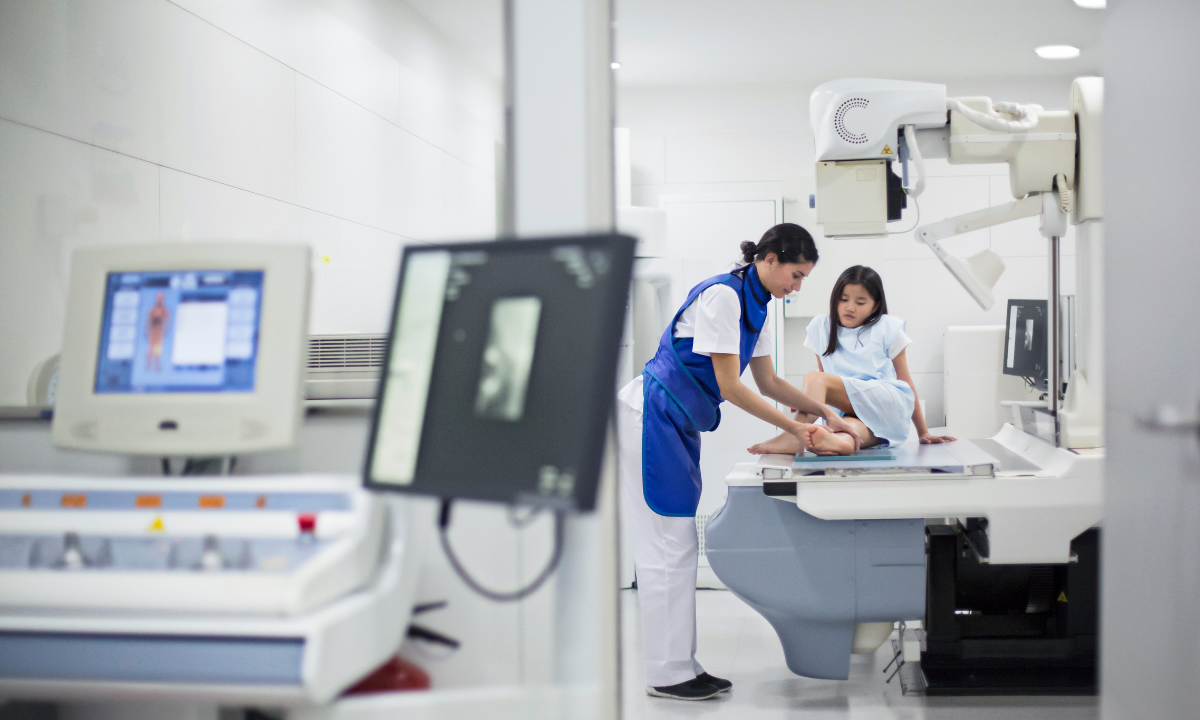Whether it’s sudden pain, an injury, or a doctor’s referral, finding a reliable X-ray centre nearby is crucial for fast diagnosis and timely treatment. Koshikaa Diagnostics in Bangalore offers quick, affordable, and accurate X-ray services with same-day reports and expert care.
This article explains why people search for nearby X-ray centres, what to expect during the scan, the types of X-rays available at Koshikaa, safety measures we follow, and how you can book your appointment easily—online or by walking in.
Why Do People Search for an X-Ray Centre Nearby?
Quick Scans for Pain, Injury, or Illness

When you have pain, a fracture, or sudden health issues, your doctor may ask for an X-ray immediately. Having a centre nearby saves time and helps you start treatment faster.
Doctor Referrals Requiring Immediate X-Rays
Sometimes, your doctor needs your X-ray report on the same day to decide your treatment plan. Visiting an X-ray centre close to you makes this easy.
Convenience and Easy Access Without Long Waits
You don’t want to travel far or wait long hours when you are unwell. That’s why people prefer nearby centres that offer quick scans without delays.
Why Choose Koshikaa for Your X-Ray Scan?
Fast Reports for Timely Treatment
At Koshikaa Diagnostics, we understand the urgency of your reports. We provide quick results so your doctor can start your treatment without delay.
Advanced Digital X-Ray Machines for Clear Images
We use advanced digital X-ray machines that give clear and detailed images, helping doctors make accurate diagnoses.
Skilled Radiologists Ensuring Accurate Results
Our team of experienced radiologists checks every scan thoroughly to provide the most accurate reports.
Affordable X-Ray Prices in Bangalore
We keep our prices affordable so that everyone can access high-quality diagnostic services without worry.
Types of X-Ray Scans at Koshikaa
Chest X-Ray for Breathing Problems
If you have a cough, chest pain, or breathing issues, a chest X-ray helps your doctor check your lungs and heart.
Abdomen X-Ray for Stomach Issues
When you experience severe stomach pain, your doctor may request an abdominal X-ray to assess for any blockages or intestinal issues.
Bone and Joint X-Rays for Fractures or Pain
Bone and joint X-rays are common for injuries, fractures, or joint pain. They show any cracks or dislocations clearly.
Dental X-Ray for Tooth and Jaw Issues
Dental X-rays help your dentist check tooth decay, infections, or jaw problems before treatment.
What Happens During an X-Ray at Koshikaa?
How to Prepare Before Your Scan
You usually don’t need any special preparation. Just wear comfortable clothes and remove any jeweler or metal objects.
Quick and Painless Procedure Explained
The X-ray process is simple and painless. You will be asked to stand or lie down depending on the area to be scanned. The technician will position you correctly, and the scan takes only a few minutes.
When Will You Get Your Reports
At Koshikaa, we provide reports quickly, often on the same day, so you can consult your doctor without waiting.
Is Getting an X-Ray Safe?
Understanding Radiation and Safety
Many people worry about radiation. X-rays use very low doses, and the benefits of finding health problems early are much higher than the small risk.
Safety Measures We Follow at Koshikaa
We follow all safety guidelines to keep radiation exposure as low as possible. Our staff ensures you are safe and comfortable throughout the scan.
X-Ray Scan Cost at Koshikaa Bangalore
We offer affordable X-ray prices to make sure everyone can get the scans they need without worrying about high costs. Contact us for detailed pricing based on the scan you require.
How to Book Your X-Ray Appointment?
Walk-In Facility for Immediate Scans
You can walk into our centre anytime during working hours for your X-ray without prior booking.
Book Online for Faster Service
For quicker service, you can also book your X-ray scan online through our website.
Contact Details and Exact Location
Visit us at Koshikaa Diagnostics in Bangalore. For directions, timings, and contact numbers, check our website or call us directly.
FAQs About X-Ray Scans at Koshikaa
1. Is an X-ray scan painful?
No, it is completely painless and quick.
2. Do I need to fast before an X-ray?
Usually, no fasting is required except for certain special X-rays. Our team will guide you if needed.
3. How long does it take to get my X-ray report?
You will get your report on the same day in most cases.
4. Is an appointment needed for an X-ray?
No, you can walk in, but booking online will save you time.
Conclusion
When it comes to your health, quick and accurate diagnosis matters. Whether you’re dealing with sudden pain, an injury, or a doctor’s referral, Koshikaa is here to provide reliable, high-quality X-ray in Bangalore. With advanced digital machines, experienced radiologists, same-day reports, and affordable pricing, we make the entire process smooth and stress-free.
Don’t wait when your health can’t—visit Koshikaa today or book your scan online for faster service. We’re here to help you get the care you need, when you need it.

